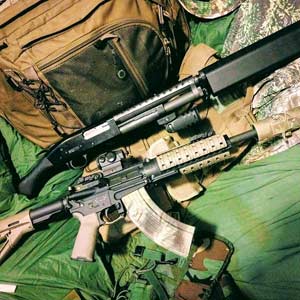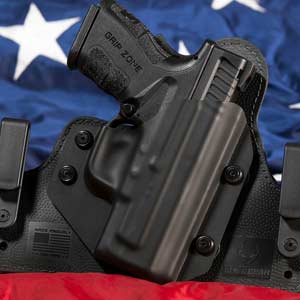
Under a letter I just recieved from the ATF the Sig Brace and Pistol IS a SBR if it is used against your shoulder instead of your forearm!
No matter what though, if you intend do this with your brace, since the Sig Brace and Pistol IS a SBR, you will need to register your firearm as an SBR. The best method of doing so is still using an NFA Gun Trust in order to make sure you, your loved ones and your property is fully protected. Currently, electronically submitted Form 1 making requests are only taking about 30 days so the process is quick for Trust submissions!
Here is the email in full:
ATF Firearms Letter on the Redesign of Stabilizing Braces
OPEN LETTER ON THE REDESIGN OF “STABILIZING BRACES”
The Firearms and Ammunition Technology Division (FATD), Bureau of Alcohol, Tobacco, Firearms and Explosives (ATF) has received inquiries from the public concerning the proper use of devices recently marketed as “stabilizing braces.” These devices are described as “a shooter’s aid that is designed to improve the single-handed shooting performance of buffer tube equipped pistols.” The device claims to enhance accuracy and reduce felt recoil when using an AR-style pistol.
These items are intended to improve accuracy by using the operator’s forearm to provide stable support for the AR-type pistol. ATF has previously determined that attaching the brace to a firearm does not alter the classification of the firearm or subject the firearm to National Firearms Act (NFA) control. However, this classification is based upon the use of the device as designed. When the device is redesigned for use as a shoulder stock on a handgun with a rifled barrel under 16 inches in length, the firearm is properly classified as a firearm under the NFA.
The NFA, 26 USCS § 5845, defines “firearm,” in relevant part, as “a shotgun having a barrel or barrels of less than 18 inches in length” and “a rifle having a barrel or barrels of less than 16 inches in length.” That section defines both “rifle” and “shotgun” as “a weapon designed or redesigned, made or remade, and intended to be fired from the shoulder….” (Emphasis added).
Pursuant to the plain language of the statute, ATF and its predecessor agency have long held that a pistol with a barrel less than 16 inches in length and an attached shoulder stock is a NFA “firearm.” For example, inRevenue Ruling 61-45, Luger and Mauser pistols “having a barrel of less than 16 inches in length with an attachable shoulder stock affixed” were each classified as a “short barrel rifle…within the purview of the National Firearms Act.”
In classifying the originally submitted design, ATF considered the objective design of the item as well as the stated purpose of the item. In submitting this device for classification, the designer noted that
The intent of the buffer tube forearm brace is to facilitate one handed firing of the AR15 pistol for those with limited strength or mobility due to a handicap. It also performs the function of sufficiently padding the buffer tube in order to reduce bruising to the forearm while firing with one hand. Sliding and securing the brace onto ones forearm and latching the Velcro straps, distributes the weight of the weapon evenly and assures a snug fit. Therefore, it is no longer necessary to dangerously “muscle” this large pistol during the one handed aiming process, and recoil is dispersed significantly, resulting in more accurate shooting without compromising safety or comfort.
In the classification letter of November 26, 2012, ATF noted that a “shooter would insert his or her forearm into the device while gripping the pistol’s handgrip-then tighten the Velcro straps for additional support and retention. Thus configured, the device provides the shooter with additional support of a firearm while it is still held and operated with one hand.” When strapped to the wrist and used as designed, it is clear the device does not allow the firearm to be fired from the shoulder. Therefore, ATF concluded that, pursuant to the information provided, “the device is not designed or intended to fire a weapon from the shoulder.” In making the classification ATF determined that the objective design characteristics of the stabilizing brace supported the stated intent.
ATF hereby confirms that if used as designed—to assist shooters in stabilizing a handgun while shooting with a single hand—the device is not considered a shoulder stock and therefore may be attached to a handgun without making a NFA firearm. However, ATF has received numerous inquiries regarding alternate uses for this device, including use as a shoulder stock. Because the NFA defines both rifle and shotgun to include any “weapon designed or redesigned, made or remade, and intended to be fired from the shoulder,” any person who redesigns a stabilizing brace for use as a shoulder stock makes a NFA firearm when attached to a pistol with a rifled barrel under 16 inches in length or a handgun with a smooth bore under 18 inches in length.
The GCA does not define the term “redesign” and therefore ATF applies the common meaning. “Redesign” is defined as “to alter the appearance or function of.” See e.g. Webster’s II New College Dictionary, Third Ed. (2005). This is not a novel interpretation. For example ATF has previously advised that an individual possesses a destructive device when possessing anti-personnel ammunition with an otherwise unregulated 37/38mm flare launcher. See ATF Ruling 95-3. Further, ATF has advised that even use of an unregulated flare and flare launcher as a weapon results in the making of a NFA weapon. Similarly, ATF has advised that, although otherwise unregulated, the use of certain nail guns as weapons may result in classification as an “any other weapon.”
The pistol stabilizing brace was neither “designed” nor approved to be used as a shoulder stock, and therefore use as a shoulder stock constitutes a “redesign” of the device because a possessor has changed the very function of the item. Any individual letters stating otherwise are contrary to the plain language of the NFA, misapply Federal law, and are hereby revoked.
Any person who intends to use a handgun stabilizing brace as a shoulder stock on a pistol (having a rifled barrel under 16 inches in length or a smooth bore firearm with a barrel under 18 inches in length) must first file an ATF Form 1 and pay the applicable tax because the resulting firearm will be subject to all provisions of the NFA.
If you have any questions about the issues addressed in this letter, you may contact the Firearms and Ammunition Technology Division at fire_tech@atf.gov or by phone at (304) 616-4300.
Max M. Kingery
Acting Chief
Firearms Technology Criminal Branch
Firearms and Ammunition Technology Division
*This letter can also be found on http://www.atf.gov/content/Firearms/firearms-industry under the “News” tab.
This review is frustrating, and you can even sense that in the language used in attempting to explain this ruling.
No matter what though, if you intend do this with your brace, since the Sig Brace and Pistol IS a SBR, you will need to register your firearm as an SBR. The best method of doing so is still using an NFA Gun Trust in order to make sure you, your loved ones and your property is fully protected. Currently, electronically submitted Form 1 making requests are only taking about 30 days so the process is quick for Trust submissions!





